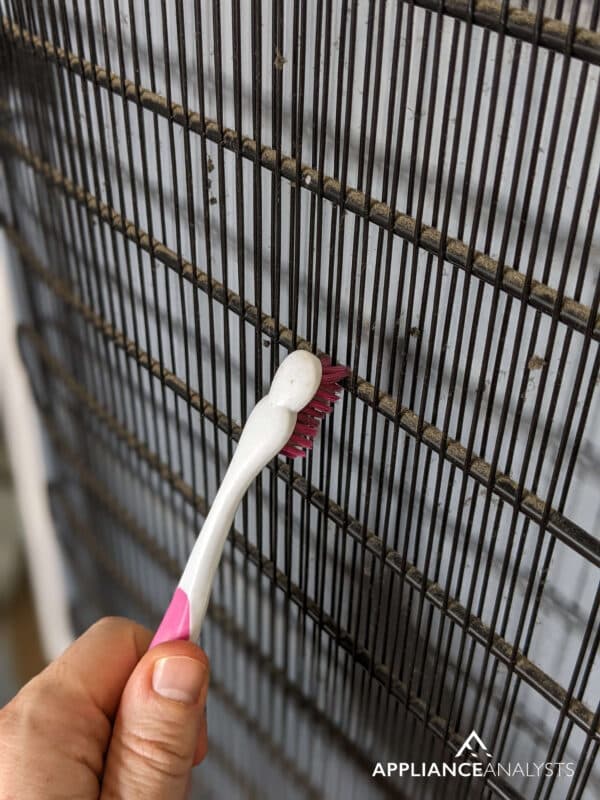We've independently reviewed this article to make sure it's as accurate as we can make it.
To find out more about our article creation and review process, check out our editorial guidelines.
With almost one-quarter of Americans struggling to pay their energy bills, it’s understandable that you would want to avoid this situation.
One way to help manage your utility costs is by being aware of the amount of energy your appliances consume, especially your fridge, which runs 24/7.
On average, it costs between $7 to $10 per month, or $81 to $124 per year, to run a full-sized refrigerator. However, this may vary depending on different factors, such as the type and size of your fridge, as well as the electricity rate in your area.
If you’d like to know how much your fridge is costing you each year and how to reduce this amount, keep reading!

We can see from the graph above that larger fridges tend to cost more to run. For example, a French Door fridge, with a capacity of 20 cubic feet or more, can cost up to $128 per year to run. In comparison, the same type of refrigerator with a capacity of 14 cubic feet can cost over $95 ($33 less) to run.
How I’ve Estimated Refrigerator Running Costs
Are you wondering how I came up with this calculator? As a data nerd, I’m happy to explain!
To make the calculator, I took data from over 1,000 fridges from BestBuy’s product database. Each has its own running cost estimate from its manufacturer. By splitting these out by refrigerator type, I was able to make the graph you see above. Then, using the trendline and applying a factor depending on the fridge type, we can calculate an estimate for your fridge type and size.
The specifications for these fridges were also using outdated electricity costs. They estimate their running costs based on a $0.12/kWh electricity tariff – which most of us haven’t seen since before Covid! So the calculator adjusts the estimated running costs based on your actual electricity tariff. Click here to know the electricity cost in your area.
Keep in mind that, unlike other appliances, a refrigerator is always on – so it’s not too useful to calculate an hourly running cost. Instead, I’ve compiled data from over 1,000 fridge models to estimate your average cost based on your refrigerator type and size.
How to Lower Your Refrigerator Running Costs
Taking care of your refrigerator is one of the most effective ways to save some money on your energy bills. In this section, we’ll outline some of the best tips that will help get started!
While we have an in-depth article with best practices for maintaining your refrigerator, I’ll just cover a few key points here. If you’re interested in learning more, don’t forget to check out the complete guide.
Before trying any of these tips, it’s important to read the manufacturer’s manual. If you’ve lost yours, please check out our guide to finding any appliance manual online.
#1 Consider the Placement of Your Fridge
Did you know that the position of your fridge can directly impact its running costs?
This happens because when it’s near sources of heat (such as a window, oven, or dishwasher), it needs to work harder to maintain its internal temperature. This can shorten its lifespan and damage different internal parts, such as the compressor, which can be very expensive to repair (up to $450!).
Try placing your refrigerator away from direct sunlight or other sources of heat, such as your stove.

It’s also crucial that your refrigerator is level to ensure its efficiency.
You see, all fridges work by using a refrigeration process to keep our food cold. During this process, a coolant flows through your fridge’s internal and external coils in the form of gas and liquid to absorb heat.
Unfortunately, if the refrigerant can’t circulate properly, your fridge will struggle to maintain its temperature.
Having a fridge that is not level can also cause the doors to not close properly. When this happens, your electricity bills can skyrocket!
Now, this is where a simple tool like a spirit level comes in handy. Please place it on your fridge and check if the bubble lands in the center.

If your fridge is not level, adjust the leveling legs or adjustable rollers to raise or lower it. Then, check back in with the spirit level until that bubble is centered.
#2 Check the Door Seals Regularly
In my opinion, this is the easiest way to reduce the running costs of your refrigerator.
You see, the door seals (also known as”gaskets”) can become dirty or damaged very easily. When this happens, we may think that our fridge is closed when in reality it’s not, allowing all the cold air to escape and hot air to enter.
This pretty much means that your compressor needs to work overtime to keep the temperature down!
Carefully wipe away any dirt, grime, or dust from the seals using a soft cloth and a mild cleaning solution.

Then, make sure to dry them thoroughly to prevent mold. And if you notice any damage or tears in the seals, I recommend replacing them immediately.
Avoid opening the door when you don’t need to, as this can also cause your fridge to work harder. Try making a list of all the things you’re going to need before opening it.
#3 Clean the Condenser Coils
Just like how we do spring cleaning in our homes to keep things in order, it’s important to give our fridge a little love too!
By cleaning the condenser coils once a year, you’ll extend the lifespan of your fridge and keep it from having to work extra hard to release heat.
To clean the condenser coils, unplug your fridge and gently brush all the dust and debris downwards onto the floor. Then, grab your vacuum to get rid of all the mess.

Don’t forget to give the coils’ protective cover a good wipe with a damp cloth, and dry it off with a paper towel.
While you’re at it, try cleaning behind, around, and below the fridge. This will not only keep dust to a minimum, but it will also help prevent heat buildup!
#4 Use Your Fridge’s Special Features
Your fridge might have some cool features that you didn’t even know about!
For example, most modern fridges have an eco mode that will prevent excessive energy use.
Don’t worry, though. This setting won’t affect the cooling capacity of your fridge. It will only reduce the power consumption of some features like display lighting, which is great since it will help you save money on your energy bills!
Some refrigerators also offer a Vacation mode that is extremely useful when you’re away from home for a week or more. This feature will adjust the temperature of your fridge to a higher setting (typically at 59 °F (15 °C) to reduce energy consumption.
Don’t forget to check your fridge’s manual to see if it has these cool features and how to turn them on!
#5 Store Food Properly
Finally, it’s important to remember not to overfill your refrigerator and to avoid storing warm food in there.

As you can probably imagine, these things can actually cause your fridge to work extra hard, which means you’ll end up with higher energy bills.
Plus, if you put warm food in your fridge, it can create extra moisture, which can lead to frost buildup.
Conclusion
That about covers it for refrigerator running costs!
If you’d like to find out more, be sure to check out our Appliance Challenge.
In the challenge, we’ve got several guides that can save you thousands of dollars on your appliances. By both reducing running costs, and making them last much longer! All for free.







